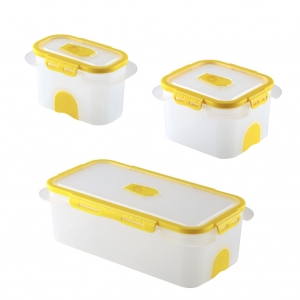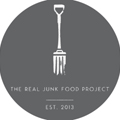 Use Pac ‘n Vac professional range of vacuum plastic food storage containers
Use Pac ‘n Vac professional range of vacuum plastic food storage containers
The cost of food is rising, so it is important for any organisation to waste as little as possible. According to the resource efficiency experts, WRAP, just one wheelie bin of food waste a week can cost a business over £10,000 a year.
Reduce the amount of food your commercial kitchen throws away and you’ll save money and improve your bottom line.
Start with better food storage
One of the most important ways to minimise waste is to store food items properly and use them before they go off. If the food is packaged, check the packaging to find out whether the food should be kept frozen, chilled or at room temperature.If you remove the packaging, retain any important information, such as use-by dates.
Remember, food becomes prone to spoiling once the original packaging is opened. The same goes for fruits and vegetables that have been cut into pieces. Once opened, you should wrap your food or decant it into an airtight, and preferably vacuum, container. Pac ‘n Vac professional range of vacuum food containers are the most effective way to store opened foods. And they save money as they keep food fresh for up to 8 times longer than ordinary plastic food ones.
Label clearly
Keep labels handy to mark dates and other information, such as a product description and allergens. Well-organised and labelled stock makes it easier to keep track of what you have and what needs using and when.
Pac’n’Vac boxes keep food looking and staying fresher for longer than other plastic food boxes due to their instant, no gadget vacuum valve. The containers are stackable, trackable and can go straight from the freezer to the microwave and into the dishwasher afterwards.
You can purchase Pac ‘n Vac professional range here
Remember to store dairy products, cooked meat, raw meats, fish and fruit and vegetables separately.
Storing chilled foods
Set your fridge or refrigerated display cabinet to 5°C. This is the optimum temperature to preserve food quality for longer. Chilled food can remain out of refrigeration on one occasion for up to four hours – any more, and it must be thrown away.
Try to store raw and ready-to-eat foods separately. If this isn’t possible, store raw food below ready-to-eat food, with raw meat below raw fruit and vegetables.
Identify the best ways to arrange and order your fridge areas to prevent accidents that lead to spills and breakage.
Rotate stock regularly
Use a back-to-front system (also called the FIFO rule: ‘first-in-first-out’) – this means placing new stock behind older stock, so the older stock gets used up first before it has chance to go to waste. Use the same system for products you keep in the freezer. Always use the oldest stock available – as long as it is still suitable for consumption.
Keep a stock inventory
You should know exactly what food you have in stock at all times. Keep a detailed list of the foods in all your storage areas, including their use-by or best-before dates, that you can easily refer to. This will help to avoid foods being forgotten and going to waste.
Create specials
Rethink what you would usually consider waste and turn it into profit. Be creative and turn what would soon be spoiled or binned into tasty daily or weekly specials. Encourage your chefs to develop recipes that use up leftover items too.
If you think you may not sell a certain type of dish before it spoils, why not offer a temporary special price to sell the food, avoid waste and still make a profit?
Cooking and then chilling foods on their use-by date is another an effective way to prevent food waste. Use-by dates on fresh food packaging no longer apply once the food is cooked. By cooking, you’ll give ingredients a new lease of life.
Use local, seasonal produce
Locally produced, peak-season food is cheaper to buy and will last longer because it won’t have travelled across the world before you receive it. Also, only buy fresh produce, as you need it. Don’t be tempted to over-order fresh food even if your supplier is offering a discount. You’ll probably buy more than you need and you’ll end up wasting food and money.
Get more tips and guidance on food waste
If you’re a caterer and want to reduce your food waste you’ll find lots more advice at the WRAP website.


